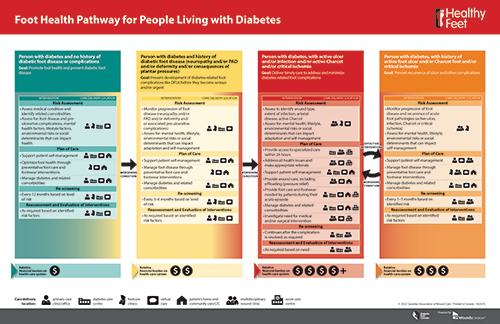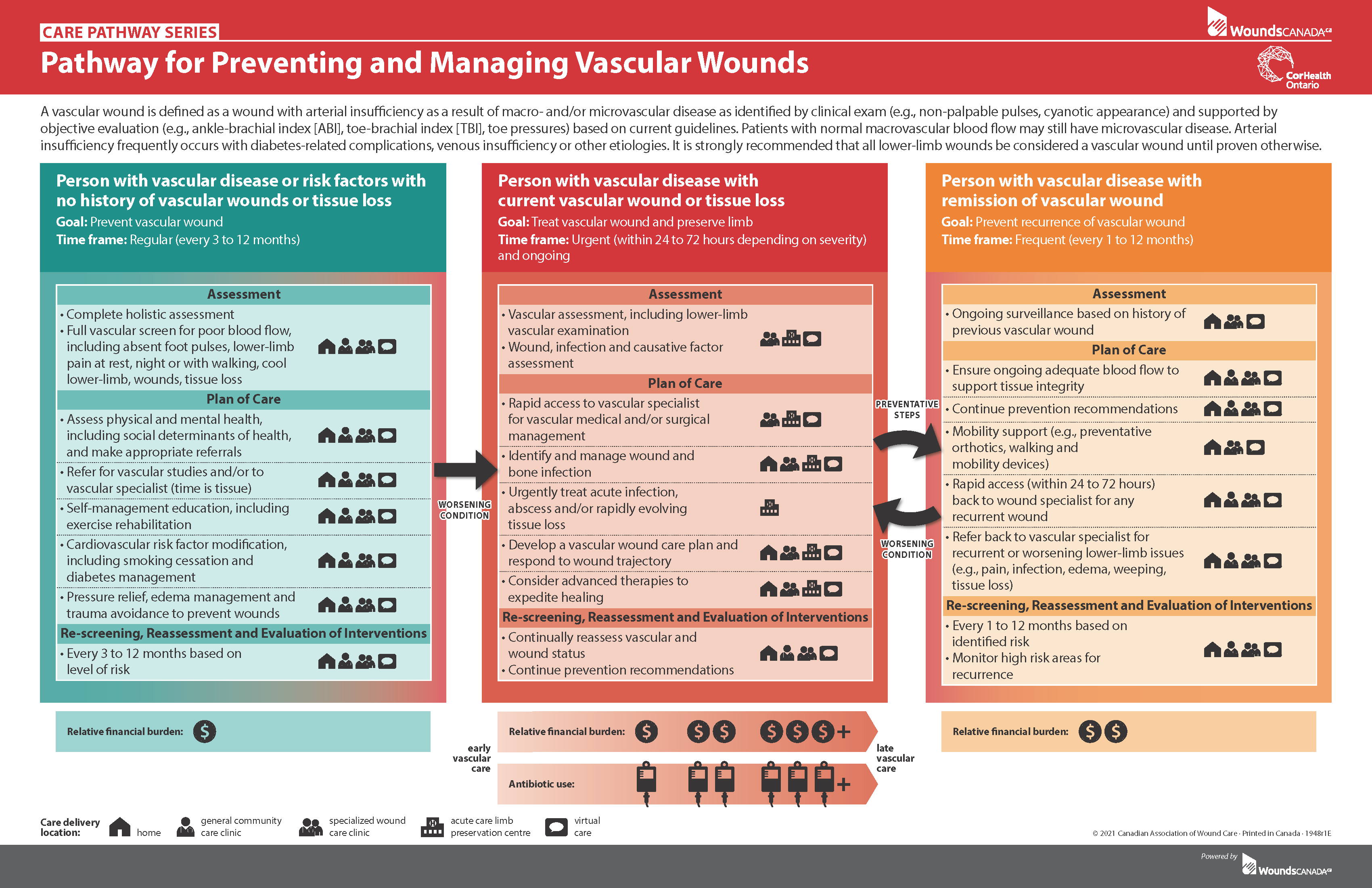Care Pathway
Wounds Canada Care Pathways
Wounds Canada has developed care pathways that utilize a risk-based approach centered on patient outcomes, experiences, and value-based care, aligning with population health principles. These pathways are designed to support skin and general health through early interventions aimed at preventing wounds and/or wound-related complications.
The pathways serve as a communication tool for individuals, families, health providers, administrators, policymakers, and funders. They emphasize the importance of risk screening and secondary and tertiary prevention using an integrated team approach. This approach promotes skin health and prevents complications, such as infections, non-healing wounds, amputations, disability, and death.
Pathway Structure
The pathways consist of three or four domains, each organized to identify an individual's specific risk level and recommend an appropriate care plan with a holistic approach, including follow-up requirements:
- Green Domain: Interventions for patients at no or very low risk.
- Yellow Domain: Interventions for patients at low risk.
- Red Domain: Interventions for patients experiencing an acute wound-related episode.
- Orange Domain: Interventions for patients in a post-acute episode stage, such as those living with a healed wound at risk for recurrence.
These pathways, based on international best practice standards, are adaptable to the needs and resources of any health jurisdiction, provided the core principles are maintained.
Care Pathway Series
Pathway for Preventing and Managing Diabetic Foot Complications
Pathway for Preventing and Managing Diabetic Foot Complications
In 2019, the Diabetic Foot Canada Task Force, a group of stakeholders from across Canada, was formed to address the lack of awareness, knowledge, and funding related to diabetic foot care. The Task Force developed an infographic representing a pathway for managing diabetic foot complications, highlighting essential care aspects in an understandable format for all Canadians, regardless of their healthcare background. You can read more about the development of the Pathway here.
Download the Pathway:
4-page Pathway for Preventing and Managing Diabetic Foot Complications (English)
1-page Foot Health Pathway for People Living with Diabetes (English)
 .
.
Read more about the development of the Pathway: www.woundscanada.ca/docman/public/limb-preservation-in-canada/2019-vol-1-no-1/1531-lpc-summer-2019-v1n1-final-p-55-61-df-inforgraphic/file
Pathway for Preventing and Managing Vascular Wounds
In 2020, Ontario Health - CorHealth Ontario’s Lower-Limb Preservation Advisory Committee collaborated with Wounds Canada to develop a practical, system-level Pathway for Preventing and Managing Vascular Wounds. This pathway highlights key care activities for vascular wound prevention and management, emphasizing regular screening, early identification, timely assessment, and best-practice treatment.
The pathway includes:
- A definition of vascular wounds, emphasizing that every lower-limb wound should be considered a vascular wound until proven otherwise.
- A roadmap for lower-limb preservation organizations, administrators, and champions to optimize best-practice vascular wound care, reduce healthcare costs, and improve patient outcomes, including reducing avoidable major lower-limb amputations.
Download the Pathway:
1-page Pathway for Preventing and Managing Vascular Wounds

